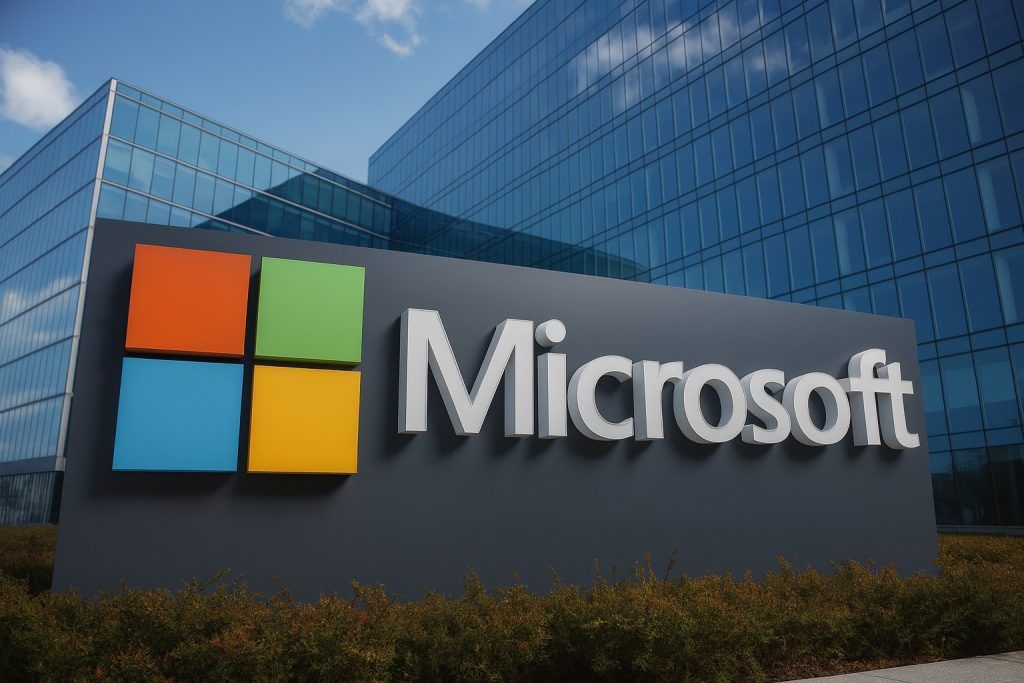- The 2026 Social Security cost-of-living adjustment (COLA) announcement was delayed to Oct. 24 due to the recent government shutdown [1]. The SSA will now publish the official COLA on that day.
- Early estimates from experts place the 2026 COLA around 2.7% (up from 2.5% in 2025) [2]. For the average retired worker ($2,008/month), a 2.7% increase means roughly +$54 per month (about $650 a year) starting in January 2026 [3] [4].
- However, key costs are rising sharply. Medicare Part B premiums are projected to climb to about $206 per month next year – roughly $21 above current levels [5] – which will eat into much of the COLA bump. Everyday essentials (food, housing, healthcare) are also outpacing these gains [6] [7].
- Senior advocacy groups warn the COLA formula (based on the CPI-W index) understates retirees’ expenses [8] [9]. In fact, retirees have lost roughly 20% of purchasing power since 2010 because CPI-W gives too little weight to housing and medical costs [10] [11]. The Senior Citizens League urges Congress to adopt a CPI‑E measure that better reflects elderly spending [12].
- Separate from the COLA, a new law (the 2025 Social Security Fairness Act) already boosted many beneficiaries’ checks by eliminating the so-called “WEP/GPO” pension offsets. As a result, some retirees saw larger checks earlier this year, with average SSFA-related increases of several hundred dollars [13].
- In financial markets, U.S. stock indexes remain strong (Nasdaq and S&P 500 at record highs) and the 10-year Treasury yield is around 4.0% [14] [15]. Investors are eyeing Friday’s CPI report and future Fed policy. Softer inflation readings would cement expectations of rate cuts in 2026 [16] [17].
Why the COLA Announcement Was Delayed
Normally the SSA announces the annual COLA in mid-October after the Bureau of Labor Statistics releases the September Consumer Price Index for Urban Wage Earners (CPI-W). The COLA is based on the rise in average CPI-W over July–September vs. the same period a year earlier [18]. Because of the federal government shutdown, the BLS delayed the CPI release to Oct. 24, and the SSA said it will announce the 2026 COLA on Oct. 24 as well [19] [20]. In other words, this Friday should be the big day for Social Security. Until the numbers are official, all we have are projections from economists and senior advocacy groups.
How the COLA Is Calculated
Each year the SSA adjusts benefits for its roughly 75 million recipients (retirees, disabled Americans, survivors, etc.) to keep up with inflation [21]. The 2026 COLA will be based on the CPI-W data for July, August and September 2025. If that 3-month average is higher than the 2024 level, beneficiaries will get a raise; if it is lower, the COLA could be modest or even flat (only three times in history has the COLA been zero). Because two of the three months’ data (July and August) are already in, analysts like Kiplinger’s economists estimated the boost would be about 2.7% [22]. (A 2.8% bump is within the range, but most forecasts center on about 2.6–2.7% [23].)
The Senior Citizens League (TSCL) – a longtime seniors’ advocacy group – is predicting a roughly 2.7% COLA for 2026 [24]. AARP makes a similar forecast (about 2.6%–2.9%) [25]. As CBS MoneyWatch reported, “A 2.7% boost in benefits would lift the average monthly payment for retired workers by $54, from $2,008 to $2,062” [26]. In short, on average Social Security checks would rise by a few dozen dollars per month. The first new COLA-adjusted payments will hit retirees’ accounts in February 2026 (covering the January benefit).
Projected 2026 Increase and Expert Estimates
Several experts have weighed in on what the official number will be. Kiplinger’s David Payne noted that after the August CPI report, “CPI release…still leaves the COLA at 2.7%. Next month’s release will determine the final number. 2.7% is most likely, but 2.8% is possible.”( [27]). The TSCL has been revising its own forecast upward each month (it had pegged early 2025 at just 2.2%) and now says 2.7% is likely [28]. AARP agrees, expecting roughly 2.6%–2.9% [29].
Those forecasts assume inflation stays roughly where it is now. If September’s data comes in surprisingly high (say, a CPI-W jump beyond expectations), the COLA could even reach 2.8%–3.0%. But if inflation cools in the third quarter, the COLA could slip closer to 2.5% or less. We won’t know until the BLS releases the data Friday, but most analysts see a mid-to-high-2% increase as the base case [30] [31].
Retirees Face Other Rising Costs
Even a ~2.7% COLA increase will be under strain from other cost pressures. Seniors’ biggest budget items are rising fast. Housing and health care inflation, for example, exceed general inflation, yet the COLA uses CPI-W, which underweights those sectors [32]. TSCL notes that “the real buying power” of Social Security payments “has fallen about 20% since 2010” because retirees’ costs (healthcare, housing, etc.) have risen much more than the COLA formula reflects [33]. In practical terms, that means many seniors see the dollar value of their check go up, but still feel poorer because prices – especially for doctors, rent and groceries – keep climbing.
Experts warn that common expenses will offset much of the COLA. A TSCL analysis lists three “costs that could erode your 2026 COLA”:
- Medicare premiums: The standard Part B premium (for medical coverage) is expected to jump from $185 in 2025 to about $206 in 2026 [34]. That $21 increase would nearly wipe out half of the $54 monthly COLA bump.
- Everyday inflation: Food, utilities, gasoline, prescription drugs and other essentials have been rising for years. Many seniors say prices of groceries and medicine keep outpacing the COLA. TSCL warns that even a 2.7% increase “still won’t be enough to cover the rising costs seniors face,” since “essentials like housing, healthcare, and groceries continue to climb faster than the COLA can keep up with” [35].
- Taxes on benefits: Higher Social Security checks can bump some retirees into a higher tax bracket or trigger a larger share of benefits to be taxed. (New tax provisions in 2026 may partially offset this, but it remains a factor.)
Kevin Thompson (CEO of investment firm 9i Capital and host of the 9innings podcast) puts it bluntly: “A $30,000 annual Social Security benefit only increases by about $67.50 per month. When you factor in the $21.50 increase in the Medicare Part B premium, there’s not much left over.” [36]. In other words, most people will see only a few tens of dollars extra after Medicare costs, making budgeting very tight if other prices keep rising.
On top of all this, Medicare Open Enrollment is underway (Oct. 15 – Dec. 7). Retirees must choose their 2026 health plans now. Higher Part B premiums and any changes in plan costs can further squeeze budgets. Seniors should review plan options carefully, since a COLA bump may be partly eaten by higher out-of-pocket expenses.
Criticism of the COLA Formula
Many observers lament that the COLA formula itself fails to capture retirees’ reality. Currently SSA uses the CPI-W index (urban wage earners) to calculate increases. Critics argue CPI-W gives too much weight to goods (clothing, transportation) and too little to health and housing – categories where seniors spend more.
“The government still uses the Consumer Price Index for Urban Wage Earners (CPI‑W) to calculate the COLA, even though it doesn’t reflect how seniors actually spend their money,” notes TSCL [37]. The League has urged Congress to switch to the Consumer Price Index for the Elderly (CPI‑E), which tracks inflation for older households. CPI‑E generally rises slightly faster than CPI‑W, since it weights healthcare and housing more. TSCL says using CPI‑E “would protect retirees’ buying power for good” [38]. Michael Ryan, a personal-finance expert, adds that over the last 25 years CPI‑E exceeded CPI‑W about 69% of the time, compounding into thousands of dollars that seniors miss out on [39].
In short, even if the COLA hits 2.7% or more, many advocates say the methodology still shortseniors. As one headline puts it, the impending COLA “won’t be enough to support seniors and the economic pressures they face” [40].
Economic Context and Market Outlook
The COLA discussion comes amid a mixed economic landscape. On the inflation front, consumers should note that forecasters expect the September CPI (released Oct 24) to show about +3.1% year-over-year growth [41] – up from 2.9% in August, and the highest since mid-2024 [42]. That pace partly reflects recent tariff-driven price pressures in goods [43] [44]. If September inflation is indeed around 3.1%, it would affirm that cost pressures remain elevated and validate a higher COLA.
At the same time, markets are discounting some disinflation. U.S. stocks have rallied: the Nasdaq and S&P 500 recently hit record highs even as the Dow stumbled, on news of slightly weaker economic data (services and jobless claims) [45]. On Thursday (Oct 23) Wall Street surged: for example, the S&P 500 climbed about 1.6% (515-point gain for the Dow) amid talk of eased trade tensions and strong tech earnings [46]. As of Oct. 24 morning, futures were slightly higher (S&P +0.3%, Nasdaq +0.5%) ahead of the CPI report [47].
Bond investors also seem relaxed. The 10-year Treasury yield is right around 4.0% (4.01% just before the CPI release [48]), not far from its lowest level in a year. Many strategists say this reflects expectations that the Federal Reserve may soon pause rate hikes and ultimately cut rates in 2026 if inflation eases. Indeed, traders are bracing for a Fed meeting later this month, and many now see “back-to-back 25bp cuts” in 2026, which would be good for bonds and stock valuations [49] [50].
In summary, the economy is seeing modest inflation coupled with solid equity gains. For retirees, this means two things: (1) future Social Security COLAs are tied to these inflation rates, and (2) investment portfolios (stocks, bonds) are benefiting from low bond yields and high stock prices. Many retirement advisors note that in this environment, dividend-paying blue-chip stocks or bond funds might be attractive for supplementing fixed incomes (for example, long-term picks like waste-management companies or certain ETFs have been recommended [51]). But remember, stock-market moves don’t directly change your COLA – they mostly affect your personal retirement savings.
What Seniors Should Do Now
With the COLA and Medicare decisions looming, retirees can take a few practical steps:
- Monitor the Announcement: SSA will post the official COLA on Oct. 24. (Historically it appears on the SSA website and in the Federal Register.) Once released, check the percentage and calculate your new benefit.
- Review Your Budget: Even a few dollars a month extra should be factored in. But also prepare for higher Medicare Part B premiums. The projected jump to ~$206 (if confirmed) means about $21 more out of pocket each month [52]. Adjust your budget for these changes.
- Health Plan Checkup: During Medicare Open Enrollment, compare plans. If premiums or copays change in 2026, it can have as much impact as the COLA itself. Use the extra COLA funds (or the expectation of them) to cover any new insurance costs.
- Stay Informed Online: Create or use your “my Social Security” account on the SSA website. This free account lets you view your benefit statement, update information, and receive alerts about your COLA and other changes – even during a government shutdown [53]. (SSA specifically advises having an account so you won’t miss updates about your checks or COLA [54].)
- Consult Experts: If you have substantial retirement savings, consider talking to a financial advisor about the best investment mix. In this low-interest-rate world, some advocates recommend keeping a “lifetime income” portfolio (dividend stocks, bond funds) to complement your guaranteed Social Security income [55] [56]. (As one example, dividend stalwarts like PepsiCo or Genuine Parts Co. have been highlighted for steady payouts [57].) Also, tax rules can change; professional advice may help optimize how much of your benefits are taxable.
In the coming weeks, keep an eye on the news. The 2026 COLA number will likely be announced Friday morning; once it’s out, media outlets (including major financial websites) will crunch what it means for individual benefits. We will update with the exact percentage and experts’ take as soon as it’s official. For now, the consensus is for a modest raise – better than last year, but still cautious given cost pressures [58] [59].
Sources: Social Security experts and news outlets (CBS, Newsweek, Kiplinger), plus market reports (Investopedia) and analysis from Tech Space 2.0 (ts2.tech) [60] [61] [62] [63] [64] [65] [66]. These provide the latest forecasts, quotes from senior advocates and economists, and up-to-date market data relevant to retirees. Each citation links to detailed source information.
References
1. www.cbsnews.com, 2. www.cbsnews.com, 3. www.cbsnews.com, 4. www.cbsnews.com, 5. ts2.tech, 6. www.newsweek.com, 7. ts2.tech, 8. www.newsweek.com, 9. ts2.tech, 10. ts2.tech, 11. www.newsweek.com, 12. www.newsweek.com, 13. www.kiplinger.com, 14. ts2.tech, 15. www.investopedia.com, 16. www.investopedia.com, 17. ts2.tech, 18. www.cbsnews.com, 19. www.cbsnews.com, 20. www.cbsnews.com, 21. www.cbsnews.com, 22. www.cbsnews.com, 23. www.cbsnews.com, 24. www.cbsnews.com, 25. www.cbsnews.com, 26. www.cbsnews.com, 27. www.kiplinger.com, 28. www.cbsnews.com, 29. www.cbsnews.com, 30. www.cbsnews.com, 31. www.cbsnews.com, 32. ts2.tech, 33. ts2.tech, 34. ts2.tech, 35. www.newsweek.com, 36. www.newsweek.com, 37. www.newsweek.com, 38. www.newsweek.com, 39. www.newsweek.com, 40. www.newsweek.com, 41. www.investopedia.com, 42. www.investopedia.com, 43. www.cbsnews.com, 44. www.investopedia.com, 45. ts2.tech, 46. ts2.tech, 47. www.investopedia.com, 48. www.investopedia.com, 49. ts2.tech, 50. www.investopedia.com, 51. ts2.tech, 52. ts2.tech, 53. www.kiplinger.com, 54. www.kiplinger.com, 55. ts2.tech, 56. ts2.tech, 57. ts2.tech, 58. www.cbsnews.com, 59. www.newsweek.com, 60. www.cbsnews.com, 61. www.newsweek.com, 62. ts2.tech, 63. ts2.tech, 64. www.investopedia.com, 65. www.kiplinger.com, 66. www.kiplinger.com







